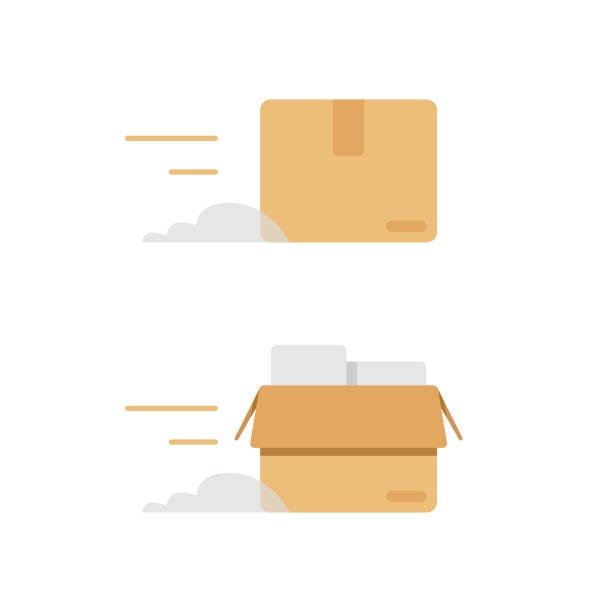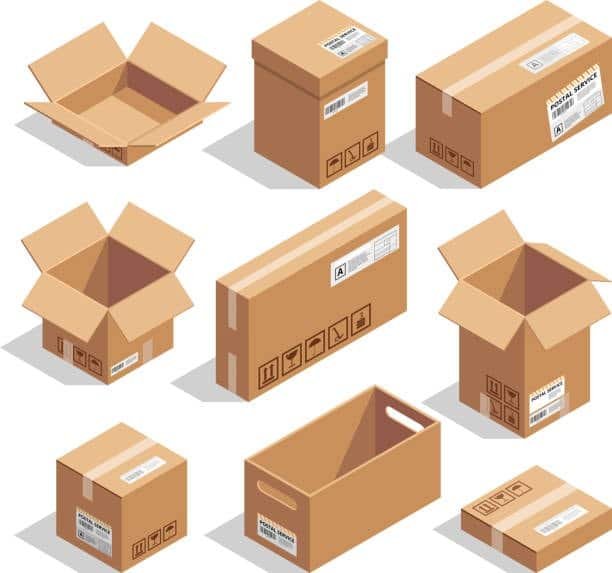The way you ship your products in e-commerce today can decide your ecommerce businesses success or failure. Many online companies now use the flat shipping rate system as their preferred shipping method, which is one of the most popular options. This write-up will look at flat rate shipping starting with its meaning and going into more details such as usage strategies.
Understanding the Basic Definition of Flat Shipping Rate
Flat shipping means the same cost no matter how large the order, how much it weighs or where it is being delivered if the destination follows specified limits, which flat rate shipping typically ensure . Instead of adjusting to several factors, as variable shipping can, flat rate shipping methods present customers with a single set rate for their packages. Without considering weight, size or travel distance, this way of shipping makes the whole process easy to understand for everyone involved.
With the concept, shipping costs are divided among all orders, even though some are sent by the flat rate and others could cost more or less. Companies can earn profits and make sure customers can see their shipping prices and charges when they buy, providing cost savings in the process .
How Flat Rate Shipping Works in E-commerce
A flat rate shipping charge is set that is used for every eligible order according to particular conditions. Once customers add things to their cart and prepare to check out, the same shipping price appears, no matter how many items they’re buying. This means the system finds the average cost for shipping every order, including flat rate boxes, and adds a small extra amount to this so the shipping cost is still profitable.
Flat rate shipping is often used by e-commerce platforms in their checkout, so the fee is set and charged based on shipping zones where the customer is located or what items are bought. Automation removes steps from purchasing so carts are not abandoned as often due to shipping cost surprises, which leads to many flat rate shipping faqs .
Key Benefits of Implementing Flat Rate Shipping

Flat rate shipping is beneficial for companies as well as for those who shop. Merchants benefit from this by having easier pricing, fewer shipping questions and increased average orders. The way flat rate shipping works, including various flat rate shipping options, means that financial planning is easier and this supports businesses in maintaining their usual profit margins.
Customers like that they can see their shipping costs ahead of time. Because the costs add up the same way, purchasing decisions can be helped by ensuring customers know how much to budget ahead of checkout. Flat rate shipping often motivates customers to purchase more than they would with regular shipping services , because the shipping fee doesn’t increase.
Common Types of Flat Rate Shipping Models
Many types of flat rate shipping are available to meet the requirements of different businesses. In the simplest case, the charge is the same for all deliveries, whether using a large flat rate box or otherwise no matter where or how much they go. In zone-based flat rate shipping, each area has its own rate and in order value-based, it changes based on how much you buy.
For some companies, different products are assigned their own shipping rate depending on their category. For some, time-based flat rates are used which gives clients the option to choose regular or fast shipping depending on the rate, including usps flat rate shipping options . Every model is meant to help a company reach its desired goals and keep customers satisfied.
Flat Rate vs Variable Shipping: Key Differences

Predictability in shipping costs depends on whether prices are fixed or change with every delivery, making this the main difference between flat rate and variable shipping. The way variable shipping works is it counts factors such as weight, size, where the order is going and how urgently it is needed which leads to different prices for each order. Using this method allows companies to accurately allocate costs and calculate shipping costs , but it can cause customers to have uncertain prices.
By choosing flat rate shipping, the attention needs to be on simplicity, as the same price is applied to every eligible order. Though variable shipping is a better way to charge for actual shipping, flat rate shipping allows customers to know how much their order will cost with fixed prices . Which flat rate service model you pick will be decided by your goals, earnings and what your customers want.
Calculating Your Optimal Flat Shipping Rate
You need to review past shipping data, order trends and business goals to set the right flat rate. Begin by finding out your average shipping charge for every order within the last six to twelve months. Check how your packages are balanced, the zones you ship to and changes in shipping costs with the change in season.
Make room in your shipping price to handle price changes and secure better results. Most people use 10-30% of their total financial assets as this buffer, depending on how much risk they can handle and their place in the market. You could serve a very small group of customers for various flat rates to find the one that is both accepted and brings in more profit, optimizing your fulfillment process .
Impact on Customer Purchase Behavior
Offering flat rate shipping often affects how customers choose what to buy and how often they make purchases. Research data reveals that when the ecommerce shipping fee is easy to see and remain the same, it helps to stop shopping cart abandonment and drives better conversions. People are more willing to buy products when the total price is displayed from the start as opposed to being charged extra fees at the time of checkout.
Because shipping is charged the same way regardless, many customers choose to add more products which boosts typical order values. Since the price of shipping is the same, customers buy more which raises their lifetime value as customers.
Pros and Cons of Flat Rate Shipping Strategy
Shipping services at one flat rate make it easier to price products, improve customer satisfaction, increase chances of a sale and reduce the need for extra paperwork. Calculating the price becomes easy for customers, so they ask fewer questions about shipping expenses. Having consistent revenue is good for organize both money and stock.
However, there are some problems with flat rate shipping. You could end up making less money from large orders and perhaps charge higher than expected for small, light orders. Because the shipping price is based on the total order, not just the individual item and the maximum weight allowed , small buyers may pay more and it also doesn’t show true shipping expenses. In addition, pressure from competitors may keep you from creating good flat rates.
Best Practices for Flat Rate Implementation

You need to carefully plan and keep improving your flat rate shipping for it to work well. Begin by studying your order information to notice how costs change in the shipping process and what your customers do. Look at data to determine your flat rate instead of choosing it randomly.
Clearly state your flat rate shipping policy where customers can view it such as on your products, in the shopping cart and at checkout. Run a free shipping policy for purchases that go above your current flat rate and include flat rate parcels packaging options from your postal service to attract bigger orders. Gaze at your flat rates now and then and update them when shipping, customer or competitor data changes.
Industry Examples and Case Studies
Flat rate shipping has helped big retailers get positive outcomes. The always-renewing yearly Amazon Prime fee greatly influenced how customers expected to pay for shipments. Clothing stores may use flat rate package shipping to make life easier for customers and subscription boxes keep their prices similar by using flat rates.
Some companies, especially in narrow markets, have succeeded by offering flat rate shipping, since predictable charges are more valued by niche customers. These illustrations show that flat rate shipping is helpful and cost-effective for any industry or business size, including major shipping carriers when applied correctly.
Technology and Platform Support
Most platforms now allow you to set flat rate shipping right from their internal features. All of Shopify, WooCommerce, Magento and BigCommerce provide flat rate shipping solutions with some options for customization. Such platforms give you the ability to define various flat rates for different parts of the world, different items or grouped orders.
Third-party apps are able to upgrade flat rate shipping by giving great insights, running tests for different options and connecting with numerous carriers. They allow companies to manage flat rate pricing with their chosen shipping carrier and track performance to guarantee that both the business and the customers are happy.
Setting Up Flat Rate Shipping Systems
The first step is to set up shipping on your e-commerce platform to allow flat rate pricing. Create regions for shipping and determine the rates that you will charge for each zone, according to your findings and business plans. Create swift shipping rules and make sure customers are aware of them on your website.
Before launch, check if all your shipping procedures, checkout system, order emails and deliveries work well together. Give your customer service staff training on the new shipping system to manage any questions they receive. Observe how the shop performs initially and be ready to change things when customers give you feedback and place orders.
Common Mistakes to Avoid
There are many cases where businesses unintentionally damage their profitability and customer service with the way they use flat rate shipping. Setting the shipping price too low or too high usually causes either higher shipping expenses or a loss of customers, respectively. Failing to clarify shipping terms for the buyers, not taking account of changes in seasonal shipping costs and setting flat rates without considering new product mixes are other frequent errors. To stay clear of these problems, analyze the service carefully, decide on proper charges and keep the lines of communication open with your customers.
Legal and Compliance Considerations
Shippers using flat rate pricing must obey all rules and regulations in the industry and regarding consumer protection. Set up policies that clearly say how shipping works with the us postal service and where customers can see them before purchasing. Some areas require shoppers to be told accurately about how much shipping will cost and when their items will be delivered.
Check how shipping is taxed in your area because certain regions manage it differently. It may cause difficulties as international shipping includes complex customs, import tax and additional regulations that affect what your flat rate includes.
Integration with Marketing Strategies
When used in the right way, flat rate shipping can be a helpful tool for marketing your company. Make flat rate shipping, including priority mail flat rate, a highlight in your marketing, pointing out that this option is easy and honest. highlight the benefits of flat rate shipping over other types of pricing your competitors use.
Promote your flat rate shipping to your subscribers, social media followers and TV viewers who love low prices. Flat rate pricing is simple and this helps when companies want to explain their value to customers one shipping zone.
Measuring Success and Performance Metrics
Check important metrics to check the success of your flat rate shipping option and also consider how long does flat rate last in terms of effectiveness . Evaluate conversion, typical order size, abandonment of shopping carts, commercial pricing, and cost of attracting new customers before and after the platform is put in place. Check how your shipping costs are divided, as this impacts your profits and ability to stay competitively priced.
Feedback from customers can show how people react to flat rate shipping in general. Assessing retention rates and lifetime value of customers will reveal the impact your shipping policy has over time on the business shipping zone.
Future Trends in Flat Rate Shipping
As e-commerce keeps growing, flat rate shipping adjusts to what customers expect and the advantages that new technologies bring. Some new trends seen today are adaptable flat rates, environmentally friendly shipping choices and using flat rate shipping for e-commerce firms offering services through subscriptions medium flat rate box.
Flat rate optimization is becoming more advanced thanks to AI and machine learning which help firms set their rates automatically to respond to demand, season changes and what rivals are doing flat rate services. They will likely make flat rate shipping work well and cost-effectively for every size of business own packaging.
Alternative Shipping Strategies to Consider
Even though flat rate shipping is desirable, some companies may be better off trying alternatives. Low minimum purchase thresholds for flat rate shipping services, including flat rate box sizes, can make orders bigger, but still attract buyers. Charging different shipping rates based on how much or how heavy a customer’s order is compared to standard shipping costs is a solution between flat-rate and variable pricing usps priority mail.
Calculating the cost for actual shipping rates gives detailed information but it can be more complicated. Sending goods to subscribers is optimal for companies with repeat clients and delivering locally can be best when your market is nearby flat rate shipping take.
Conclusion
Choosing flat rate shipping means the e-commerce company values simplicity and how customers feel, rather than dividing costs in detail. If a company analyzes the situation and optimizes the shipping process, including options from the post office, it can see higher conversions, more orders and less focus on operations. Considering your business approach, clientele and rival businesses can reveal if flat rate shipping is the right approach for you.

